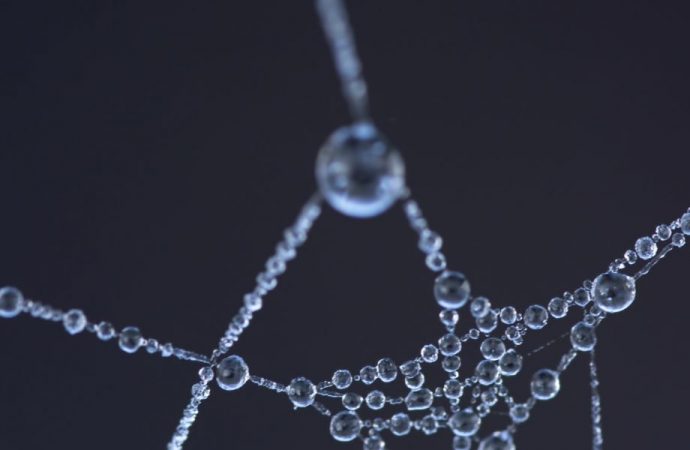Researchers have successfully created a synthetic spider silk that is only slightly inferior to its natural counterpart. However, the production method itself is even more exciting than the silk as it works at room temperature and can be used to make other materials “green.”
A Simple Method
Scientists at the University of Cambridge have created a new material that mimics the properties of spider silk, which is stronger than steel and tougher than kevlar. The team’s research has been published in Proceedings of the National Academy of Sciences.
Many researchers have attempted to replicate spider silk with varying degrees of success. The most impressive aspect of the Cambridge team’s effort might be that the synthetic silk they have been able to produce is 98 percent water.
The team first creates a hydrogel out of the water, silica, and cellulose. Holding the latter two elements together are binding molecules called cucurbiturils. Thirty minutes after pulling the long fibers of silica and cellulose from the hydrogel, the water evaporates, and the scientists are left with a tough, stretchy fiber.
From Balloons to Boats
Spider silk needs to be extremely absorbent so that the creatures’ webs can tolerate impact and catch prey. For that reason, Darshil Shah, a Research Associate at the Center for Natural Material Innovation at Cambridge, identifies protective clothing, such as bulletproof vests, as a particularly suitable application for the team’s creation.
“Things like shrapnel resistant or other protective military clothing, that would be an exciting application,” he told The Smithsonian. Bike or skateboard helmets, hot air balloon materials, parachute fabric, and sail cloth have been suggested as other potential uses.
Scientists are finding ways to create materials with all sorts of remarkable characteristics, from being able to heal themselves when split in two to charging your phone in minutes, and while the Cambridge team’s spider silk itself is another exciting material discovery, the creation process is the real innovation — it works at room temperature, using cheap and accessible materials, giving it an advantage over other synthetics like nylon.
According to Shah, different materials could be created using the same process by substituting the cellulose with other polymers. “It’s a generic method to make all fibers, to make any form of fiber green,” he told The Smithsonian.“We think that this method of making fibers could be a sustainable alternative to current manufacturing methods,” he added in an interview with AZO Materials.
Source: Futurism

































Leave a Comment
You must be logged in to post a comment.